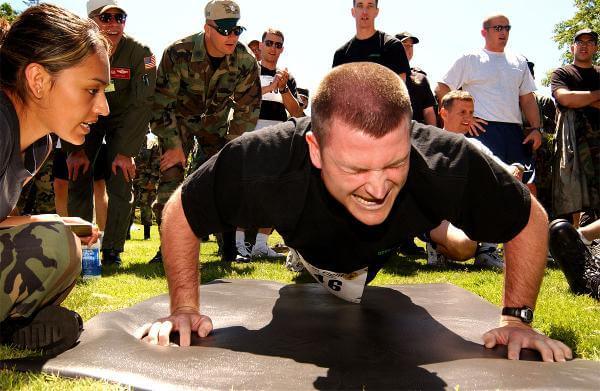The Air Force recently made a few changes to its fitness test but has kept the old test along with the new test and let Air Force personnel select the one they prefer to take. This is a reasonable way to make these types of testing transitions and allows the service to check the effectiveness of the new test as it compares to the old.
Here is a question from an active-duty Air Force member on recruiting duty:
Stew, due to COVID, I have not had a fitness test in a while and was wondering what do you think the best option would be for the new Air Force Fitness Test? The options of exercises are: 1.5-mile run or 20-meter beep test shuttle run; push-ups or hand-release push-ups; and sit-ups, cross-legged reverse crunches or plank pose. Just curious if you thought one option is easier or harder than the other? Thanks Mike
Mike, this is a good question, since many people in the Air Force can now choose what exercises they want to test during the fitness test cycle. Making both the old or new options available is a unique compromise for the personnel required to take these fitness tests.
For instance, the old test that was the standard among the branches of service is the classic push-ups, sit-ups/crunches and 1.5-mile run. Each service has their variation on what calisthenics and cardio events are used and how they are graded, but they have been using a test that roughly focuses on upper-body muscle stamina and cardio endurance.
In the Air Force, you can now select the old test or replacement combinations of the new exercise options. The new events are hand-release push-ups (like the Army's new test) in place of regular push-ups, plank pose (like the Navy) or cross-legged reverse crunches (like no one else uses) in place of regular crunches, and the 20-meter beep test/shuttle run, used by many Allied militaries and law enforcement agencies around the world, in place of the 1.5-mile run.
My first piece of advice is to practice the exercises you want to test during normal workouts in the weeks or even months prior to taking the test for real. Either practice the old or learn and practice the new. Spread them throughout your workout routines during the week. It may be wise to practice the new exercises as the option to do either the old test or the new test could just be a grace period while they determine the effectiveness of the new exercises.
Next, do not underestimate the new exercises by thinking they are an easier option. To max out the 20-meter beep test requires a significant total distance run (over a mile) while running back and forth 20 meters at a time. Doing 100 x 20-meter runs is not necessarily easier than 1.5 miles of running at a set pace.
Do not think one will be easier than the other with the strength and core section of the test, either. The only easy exercises are the ones you practice regularly. Many find the plank poses easier than crunches, sit-ups or reverse crunches, but people who run and work their hip flexors regularly may find the plank pose tougher.
Regular push-ups will be easier than the hand-release push-ups, as they are faster to perform and require less shoulder mobility. If you lack upper-back strength and shoulder mobility, the hand-release push-ups will be much tougher. If you cannot do the hand-release push-ups well, work on that weak area, as that imbalance tends to bring about common shoulder injuries and poor posture.
My advice is to take both tests and see how you perform on each of them. You may find the new one is easier to max out than the old, but still just as challenging in many ways as the old test. If you get good at all the events, you broaden your physical abilities from just muscle stamina and endurance to core strength and stability, shoulder mobility, speed and agility.
Developing more elements of fitness will make you a better tactical athlete overall. Add in some weight training on your own, and you have the tactical elements of fitness required to succeed in the physically demanding jobs of the tactical professions.
Stew Smith is a former Navy SEAL and fitness author certified as a Strength and Conditioning Specialist (CSCS) with the National Strength and Conditioning Association. Visit his Fitness eBook store if you're looking to start a workout program to create a healthy lifestyle. Send your fitness questions to stew@stewsmith.com.
Want to Learn More About Military Life?
Whether you're thinking of joining the military, looking for fitness and basic training tips, or keeping up with military life and benefits, Military.com has you covered. Subscribe to Military.com to have military news, updates and resources delivered directly to your inbox.


















